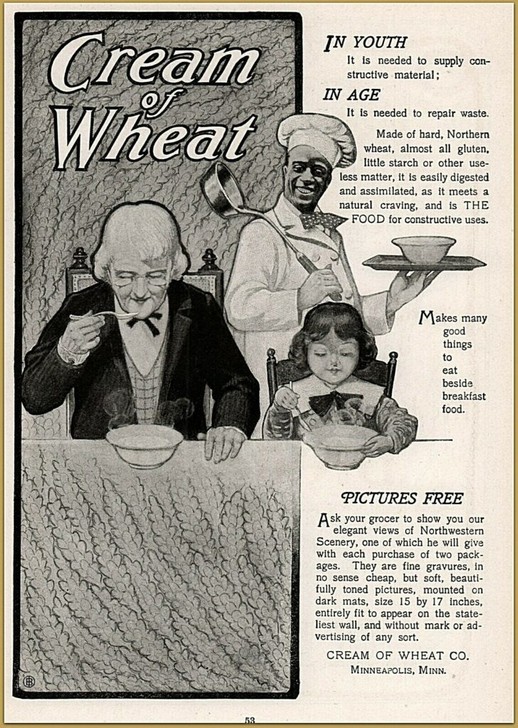Old Diamond Milling Company
Introduction
Text-to-speech Audio
The Old Diamond Milling Company was an integral part of the agricultural industry in Grand Forks, North Dakota from the late 1800’s to the mid-1900’s. Founded in 1881, the mill processed wheat into flour and was a significant contributor to the local economy. The mill was also the place that invented Cream of Wheat that is widely used today. Its strategic location along the Red River and the Northern Pacific Railroad made it a crucial player in the regional flour milling industry.
Images
Cream of Wheat

Backstory and Context
Text-to-speech Audio
The Old Diamond Milling Company played an essential role in the early history of Grand Forks, North Dakota. The company was established in 1881 by a group of investors from Minneapolis, who recognized the potential for flour milling in the region. The mill was built on the banks of the Red River of the North, which provided a reliable source of water to power the machinery. The building itself was constructed of brick, stone, and iron, making it one of the most modern and efficient mills of its time.
The company's success was due to a combination of factors, including its proximity to wheat-growing regions, the availability of waterpower, and the high quality of its products. The company was also known for the invention of Cream of Wheat which is a national phenomenon around the world today. In 1893, Tom Amidon had the idea of creating a new wheat cereal product while attending the World's Columbian Exposition in Chicago. He experimented with different wheat varieties, trying to find a way to create a smooth, easily digestible cereal. He eventually found that by milling wheat semolina to a fine consistency and then cooking it, he could create a creamy, porridge-like consistency. Amidon named the product "Cream of Wheat" and began selling it to local grocers. Initially, Cream of Wheat was primarily marketed as a health food, emphasizing its ease of digestion and high nutritional value. However, it soon gained popularity as a convenient and tasty breakfast food.
In 1897, the company was purchased by the Diamond Milling Company, which began aggressively marketing the product across the country. By the early 1900s, Cream of Wheat had become one of the most popular hot cereals in the United States. Over the years, Cream of Wheat has been marketed in a variety of ways, featuring different slogans and images on its packaging. One of the most enduring elements of its branding has been the iconic image of "Rastus," a smiling African American chef who was used in Cream of Wheat advertisements for many years. In recent decades, however, the company has shifted away from this imagery, recognizing that it is offensive and racially insensitive.The flour produced by the mill was known for its purity and strength and was sold throughout the country. Despite its success, the Old Diamond Milling Company faced a number of challenges over the years. One of the most significant was the advent of the roller mill, which revolutionized the industry in the early 20th century. The roller mill was more efficient than traditional stone mills and quickly became the preferred method of flour production. In response, the Old Diamond Milling Company began to upgrade its machinery, but it was never able to compete with the larger mills that dominated the industry.
The Old Diamond Milling Company operated until the 1930’s when it was forced to close due to declining demand for its products. The building was sold to a local grain elevator company and was used for storage until it was demolished in the 1960’s. Today, little remains of the Old Diamond Milling Company except for a historical marker located near the site of the original mill.
Cite This Entry
Michael Prahin. "Old Diamond Milling Company." Clio: Your Guide to History. May 3, 2023. Accessed April 29, 2025. https://theclio.com/tour/2456/23
Sources
"The Diamond Milling Company: 1890-1904." Grand Forks Historic Preservation Commission. http://www.grandforkshistory.com/the-diamond-milling-company-1890-1904.html
"Old Diamond Milling Company." Grand Forks Herald, May 9, 1999. https://www.grandforksherald.com/news/3306888-old-diamond-milling-company
"Diamond Milling Company Building." National Register of Historic Places Inventory Nomination Form, June 14, 1983, https://npgallery.nps.gov/GetAsset/716e57da-13e2-4ef7-99b8-f23bfa56ed91
"Diamond Milling Company." North Dakota State University Institute for Regional Studies. https://library.ndsu.edu/grhc/history_culture/business/diamond_milling.html
Van Trump, Kevin. "How a Small Group of Farmers from North Dakota Made It Big in Breakfast." Van Trump Report, 6 Oct. 2021, https://www.vantrumpreport.com/2021/10/06/how-a-small-group-of-farmers-from-north-dakota-made-it-big-in-breakfast/
Bergeson, Eric. "A Look Back: George Clifford, One of Those Behind Cream of Wheat, Was Successful Early Settler of Grand Forks." Grand Forks Herald, 14 Oct. 2019, https://www.grandforksherald.com/news/local/a-look-back-george-clifford-one-of-those-behind-cream-of-wheat-was-successful-early-settler-of-grand-forks
"Dakota Datebook Archive: Cream of Wheat, a ND Invention." Prairie Public Broadcasting, 18 May 2022 https://news.prairiepublic.org/show/dakota-datebook-archive/2022-05-18/cream-of-wheat-a-nd-invention
Cream of Wheat. "Original 2 Minute." Cream of Wheat, https://creamofwheat.com/product/original-2-minute/
"History of Cream of Wheat" from the Cream of Wheat website: https://www.creamofwheat.com/history
"The Surprising History of Cream of Wheat" by Jake Rossen, from Mental Floss: https://www.mentalfloss.com/article/85425/surprising-history-cream-wheat
"Cream of Wheat" by Heidi G. Frontani, from Encyclopedia of Food and Culture: https://www.encyclopedia.com/food/encyclopedias-almanacs-transcripts-and-maps/cream-wheat
https://www.larryrichards.com/blog/when-cream-of-wheat-took-grand-forks-county-to-the-u-s-supreme-court.html

